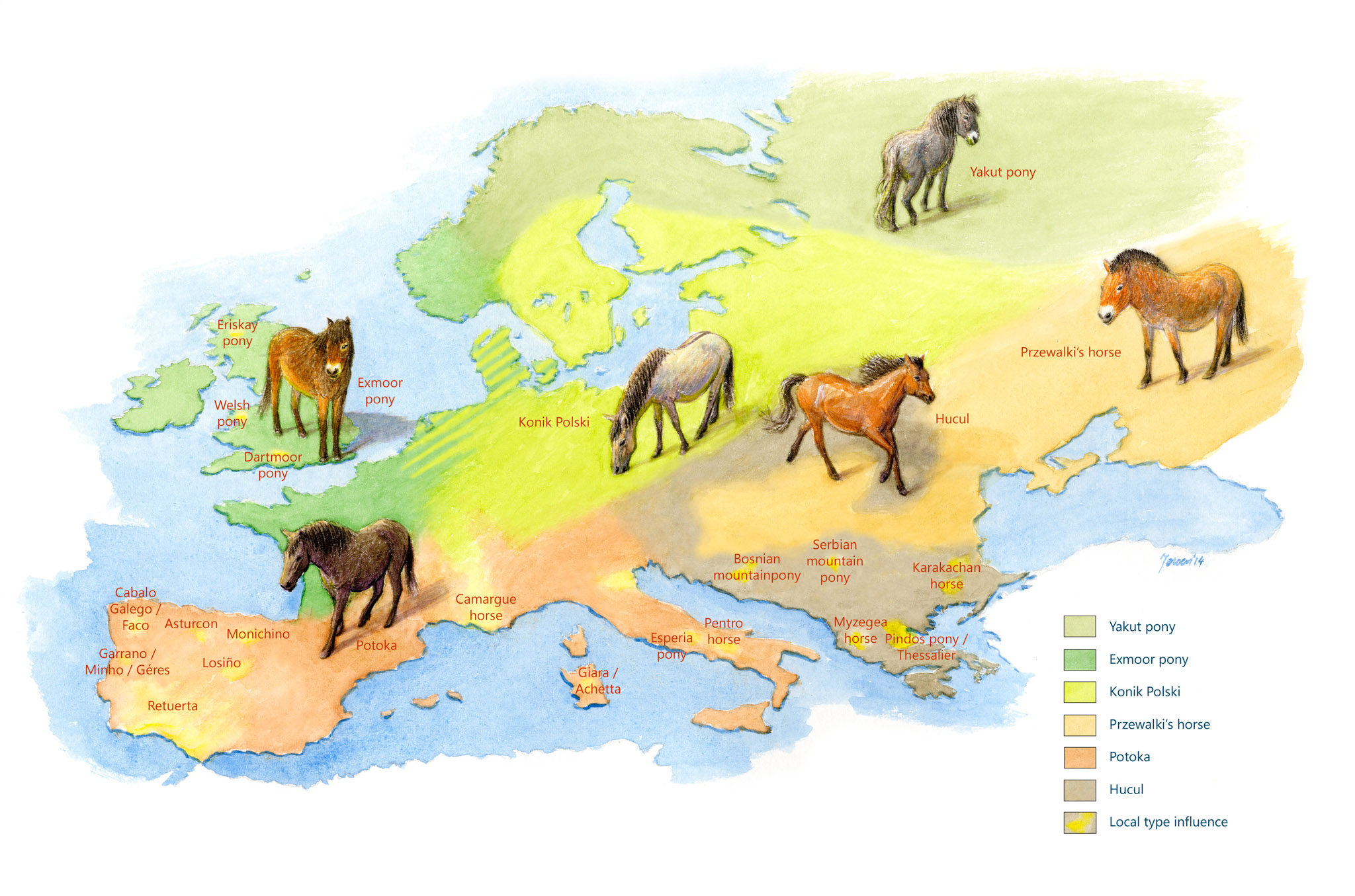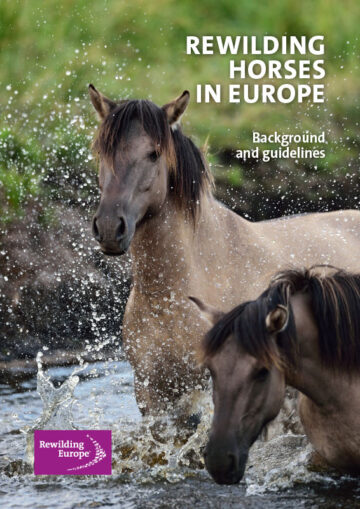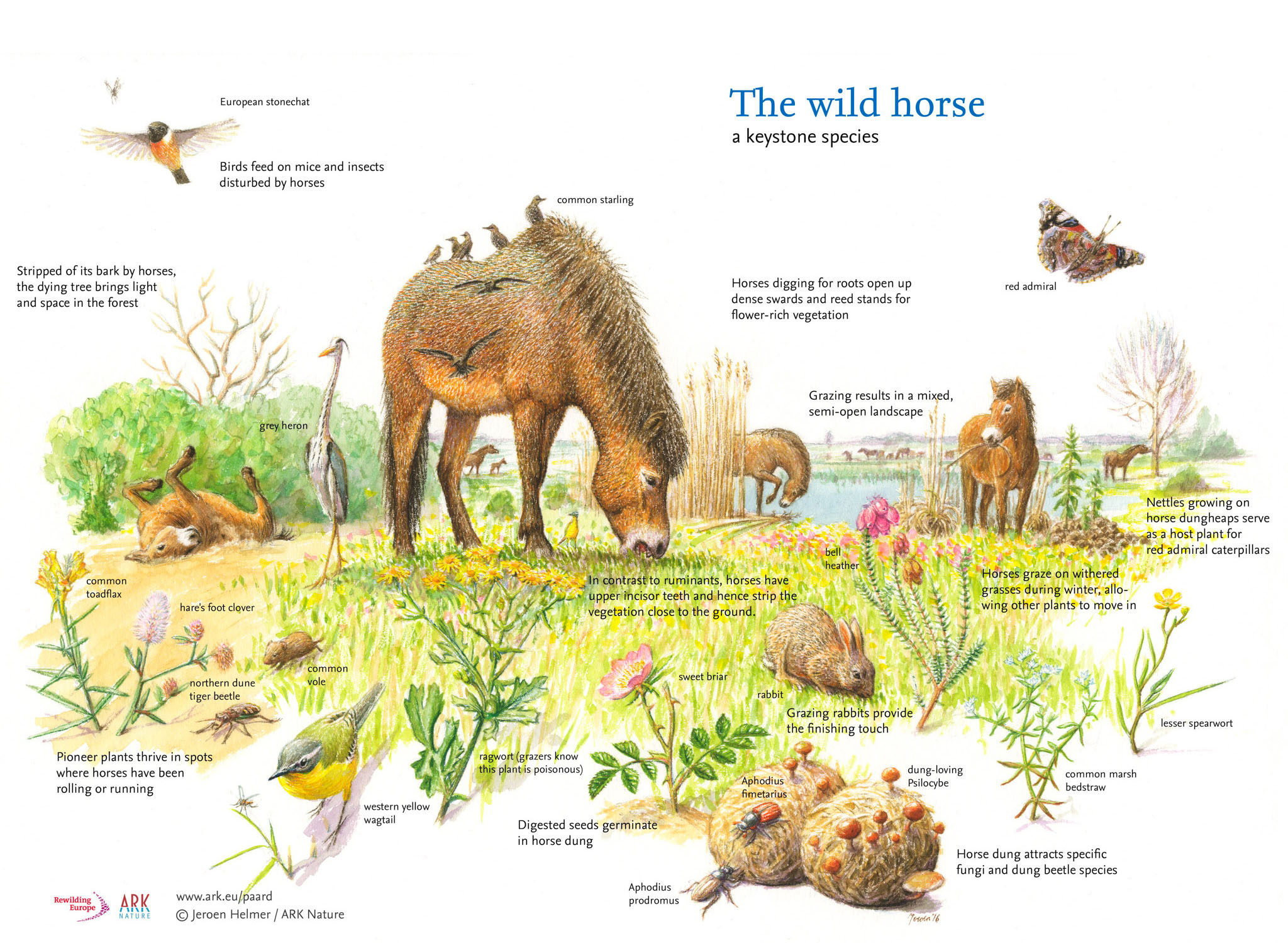From domestic breeds to wild herds
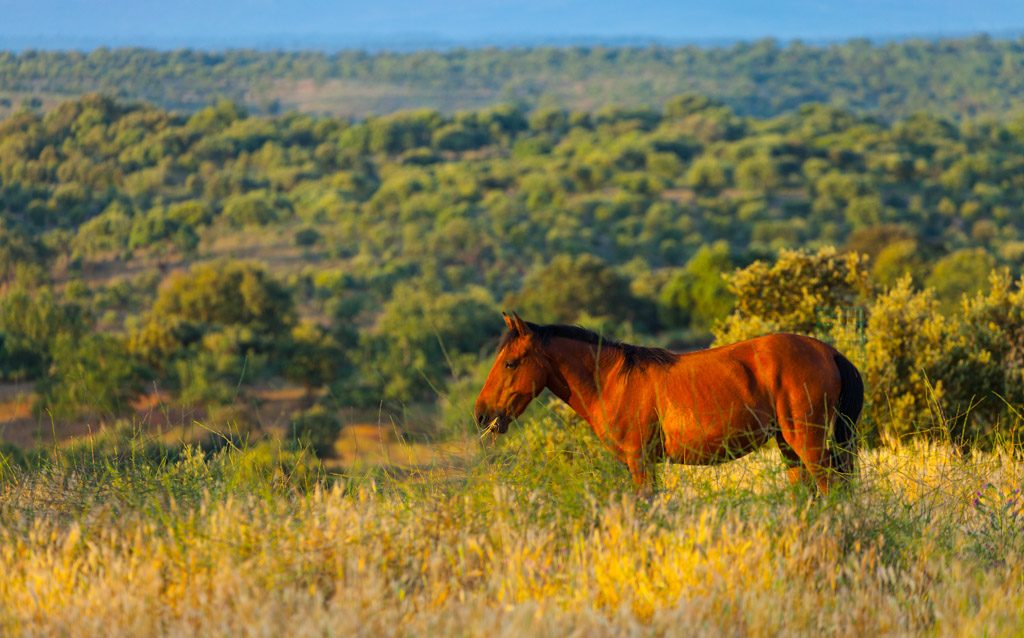
Extinct, but not lost
Wild horses once ranged all over Eurasia where, in combination with other large wild herbivores, they had a substantial influence on the nature of the landscape. Due to hunting and an increasing human population many wild herbivores disappeared and the wild ‘tarpan’ became extinct in 1909.
Extinct but no lost, the genetic heritage of European wild horse survived in their domesticated form. The local tradition of keeping some breeds in a semi-feral state made sure that wild gene variants survived. Predator avoidance, free partner selection, competition between stallions, winter hardiness, and rain/ice resistant coats were all preserved and have kept these animals fit and suitable for rewilding.
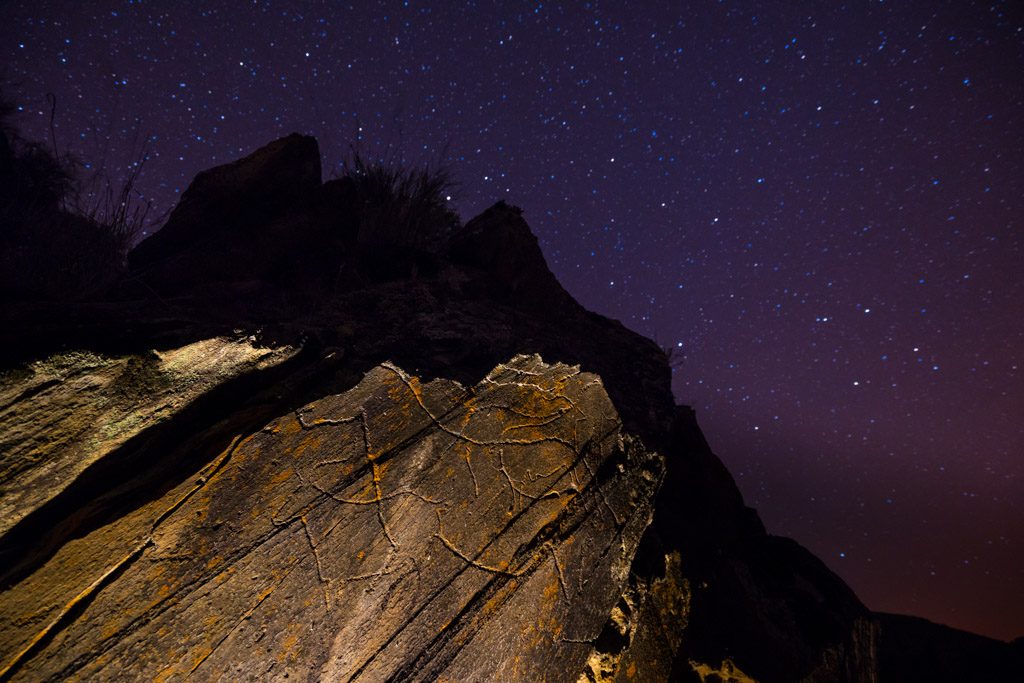
Suitable for rewilding
Several of our 21st century horse breeds are amazingly close to the horses that feature in the 15,000–32,000-year-old cave paintings in Chauvet, Altamira and Lascaux or in the rock carvings of the Côa valley. From Exmoors in the west to Hucul in the east, several primitive horse types still possess many characteristics of the original wild horse – this renders them suitable for rewilding and well-placed to reprise their vital role in European ecosystems.
The Przewalski’s horse, originally native to the steppes of Central Asia, is the last extant wild horse in the world, and can also be a great asset in restoring the functional role of extinct wild horses in Europe.
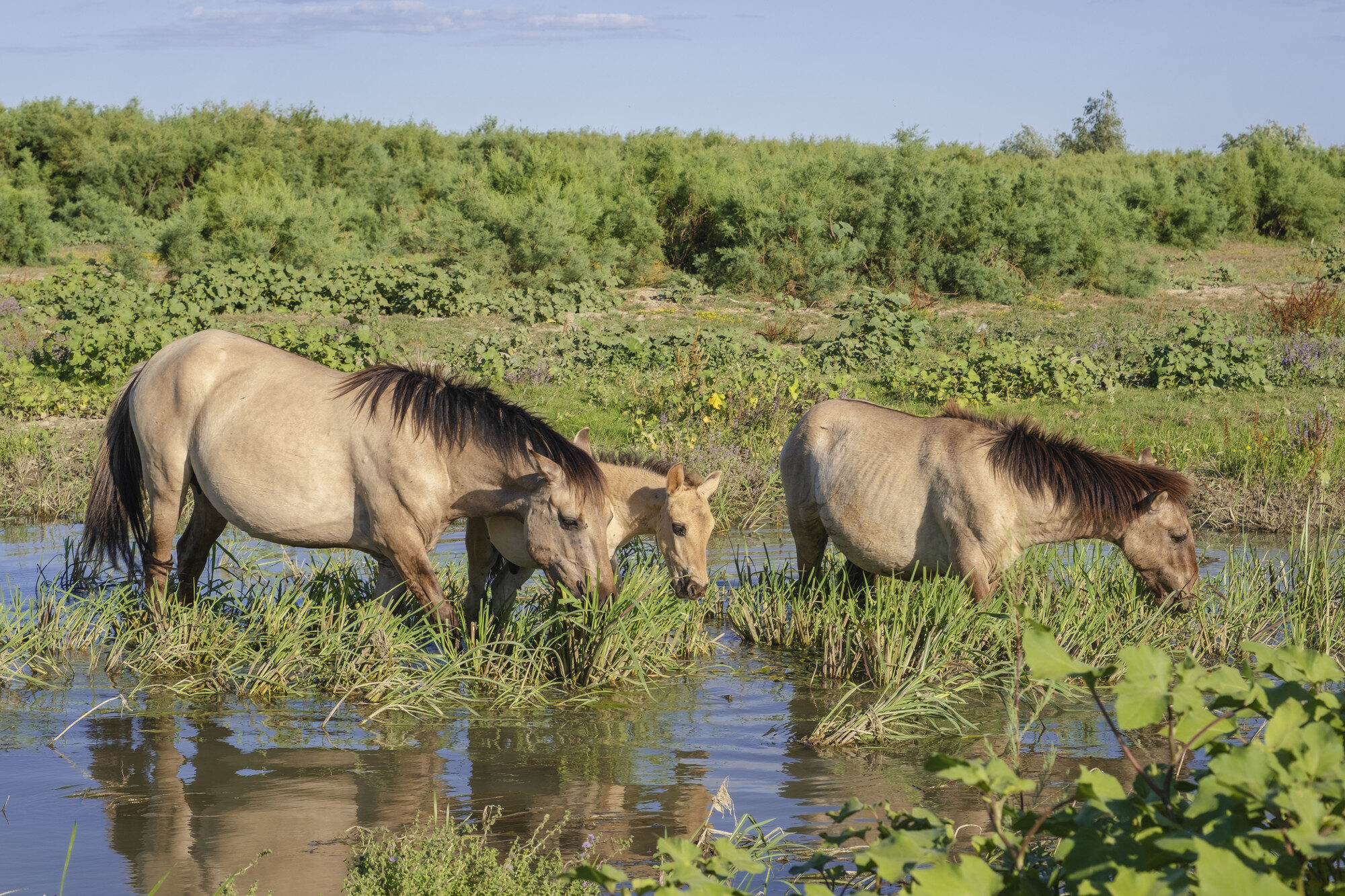
Rewilding horses
Rewilding horses means using current and future scientific knowledge to select and conserve the best descendants of the original European wild horse and to maintain free-living populations in modern natural environments. These new wild horses are not necessarily exactly identical to the extinct European wild horse, but are very capable of surviving without human management and regain their lost role in Europe’s ecosystems.
Rewilding horses means moving from domestication towards wildness, from human care to self-sustainability. Social herds are key in this. In the past, the existence of large tracts of wild land allowed large grazers to live in natural herds. Every species had its own social system, ensuring its strength and fitness, with species-specific behaviours increasing safety from predation, especially for young animals. These social systems also prevent inbreeding and direct habitat use.
What we are doing
Rewilding Europe is working to bring back free-ranging populations of horses, all across Europe. Currently we are working with six breeds that are fit for rewilding. These horses are grazing under natural conditions in our rewilding landscapes in Portugal, Spain, Croatia, Ukraine and Bulgaria. In 2023, the first release of Przewalski’s horses took place in the Iberian Highlands landscape in Spain. As an endangered subspecies of the wild horse, the Przewalski’s horse is considered the world’s last truly wild horse.
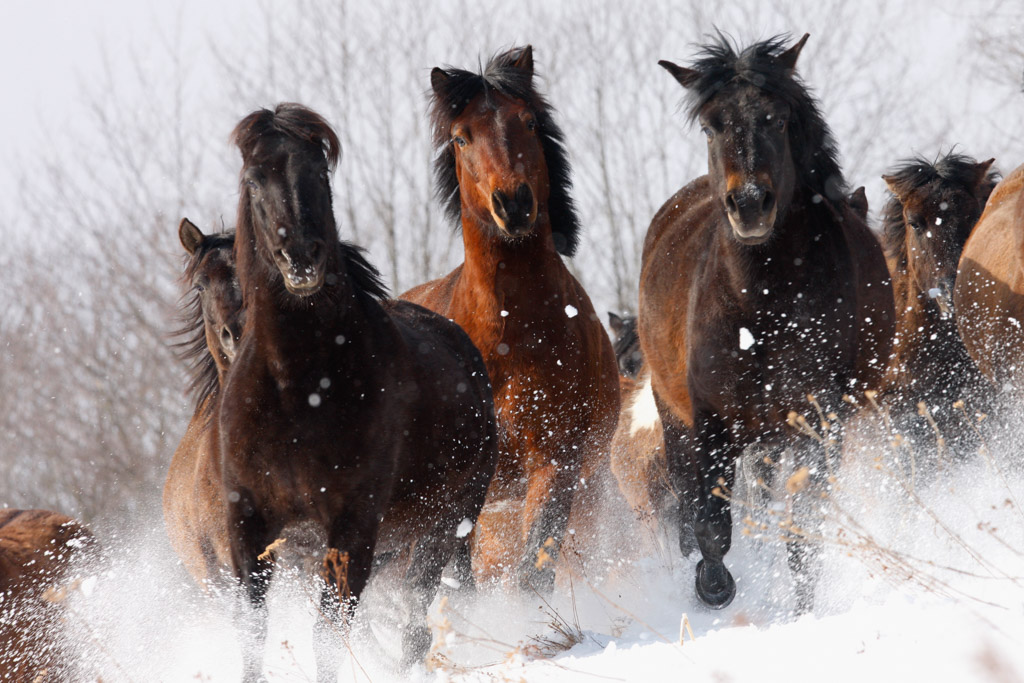
We work to establish at least five herds of 100 animals before 2022 in rewilding landscapes that are specifically selected for this purpose.
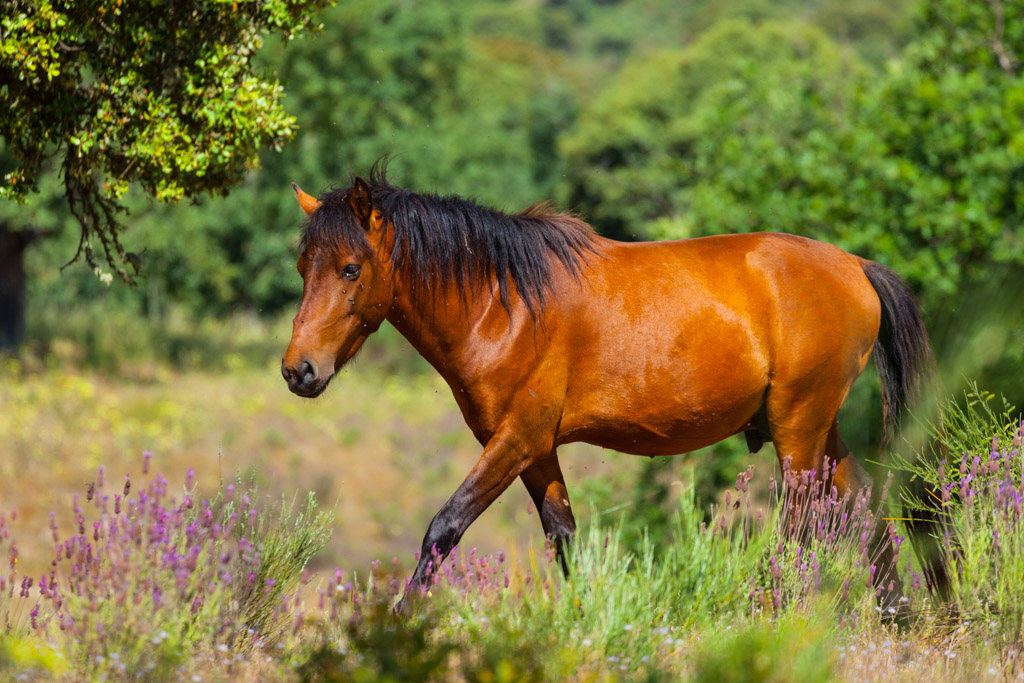
We use the Natural Grazing Facility and European Wildlife Comeback Fund to support and scale up rewilding with horses in Europe.
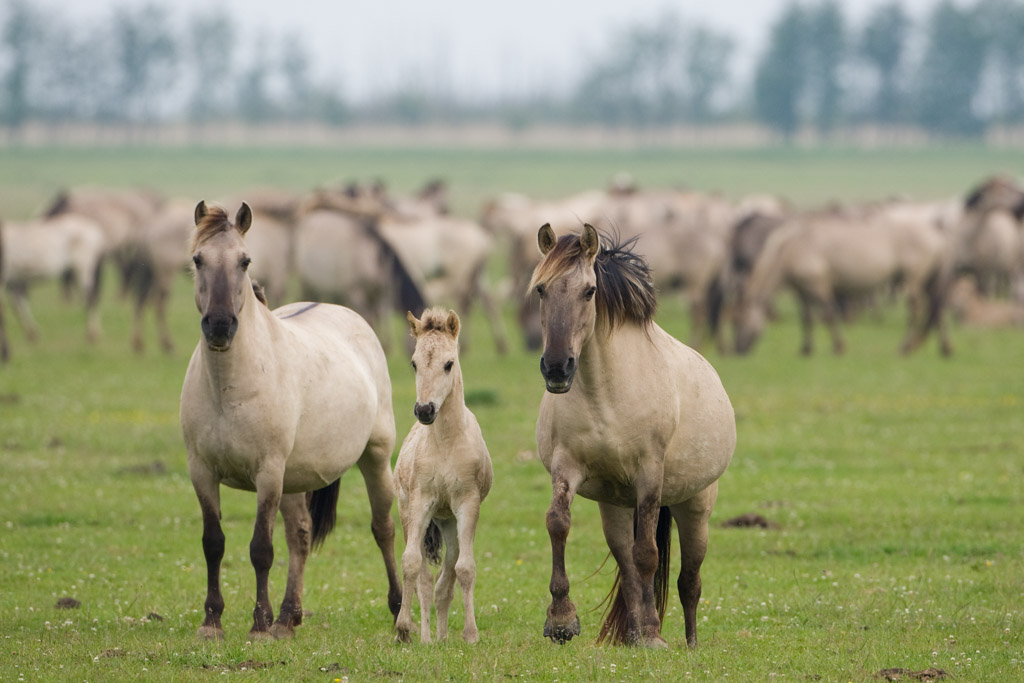
In at least one of our rewilding landscapes, we are working to create a formal ‘status wild’ for wild horses, as an example for other areas in Europe.
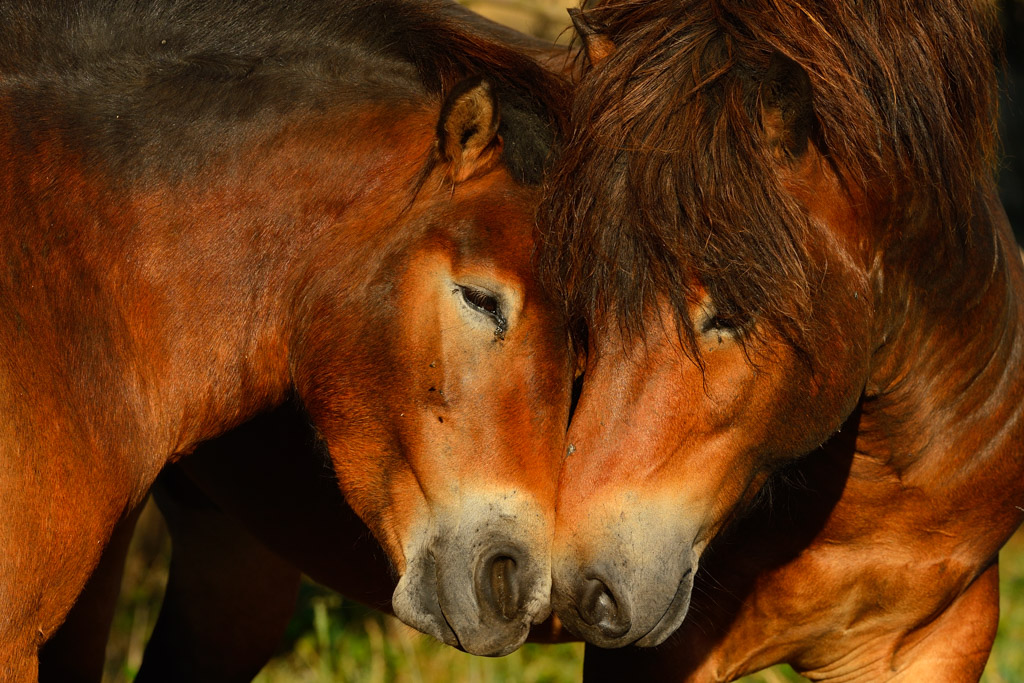
We actively support business development around the return of the wild horse, thereby directly linking wildlife conservation with local economies.
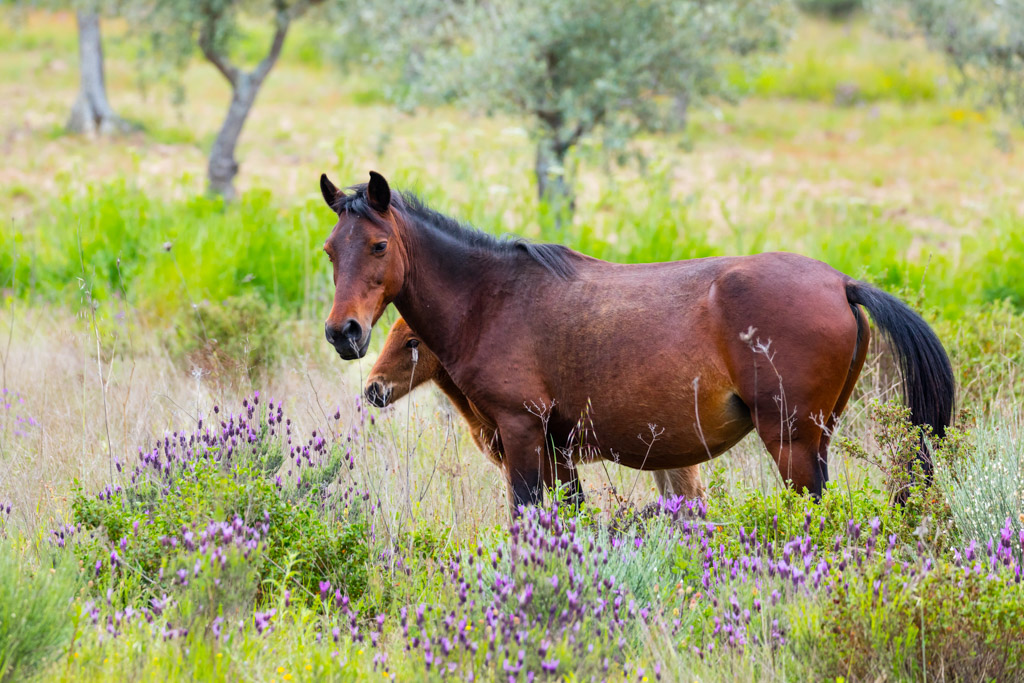
We invite all other willing and able partners (landowners, hunters, horse breeders, land managers, scientists, National Parks etc.) to join us and work together with us in this endeavor.
Suitable horse breeds
The European wild horse is officially extinct, but at the same time still present in many different types of feral horses. From Exmoor ponies in Western Europe to Hucul in the Eastern parts of the continent, several primitive horse breeds still have many characteristics of the original wild horse and are suitable for rewilding and regaining their place in European ecosystems. Horses used to live in the wild and in natural social groups are preferred above other breeds.
The horse breeds suitable for rewilding are strong, robust and pony-sized animals with little human intervention in their breeding or selection. Some of them may have ancient, wild genetic traits and many have a feral history. Very often it is a mixture of those two aspects that make them adequate for rewilding.
After a process of rewilding, the founding mix of breeds will no longer be purebred, but will gradually change to rewilded horse types. Rewilding Europe is using these horse breeds in their rewilding areas across Europe.
Symbols of freedom
Wild horses speak to our imaginations. Songs are written about these symbols of freedom and enduring legends exist in many regions of our continent. Their cultural value is beyond doubt, but their impact on the European natural landscape cannot be underestimated.
Sharing our practical experiences with rewilding horses in different parts of Europe, we hope to contribute to the ultimate goal: well-functioning European ecosystems with the wild horse as one of the defining species, adding a new chapter in our special relationship with this noble animal.
Discover more background and guidelines on this majestic and essential animal in our updated brochure on rewilding horses.
The wild horse – a keystone species
Together with other natural processes like storms, floods, forest fires and diseases, combinations of large herbivore species can shape landscapes in many of Europe’s habitats, but only if their numbers are significantly high and the species composition sufficiently diverse. Different species occupy different niches and not only compete, but also facilitate each other’s impact on the ecosystem. The sum of their combined impact on the landscape is much larger than the individual impact of one single species.
In this combined grazing, horses play an important role as can be seen in modern-day nature reserves with wild horses. Through their grazing, horses offer space for open land species like bushes, herbs, grasses and the accompanying insects and birds. The enriching impact of horses is benefiting a myriad of other species.
Our main achievements
Landmark study on rewilding horses
In 2023, we published an updated brochure that puts together most of the existing knowledge and experiences with rewilding horses in Europe. It provides background and guidelines and is meant as a ‘living document’ as there are still many unknowns about wild horses in Europe. Based on a wide range of selection criteria, the authors proposed a selection of horse breeds that are most fit for rewilding.
Selection of horse breeds for our rewilding landscapes
Based on the report mentioned above, we have started working with six different horse breeds, that we use in our rewilding landscapes: Sorraia (Greater Côa Valley), Konik (Rhodope Mountains, Velebit Mountains, Danube Delta), Bosnian Mountain Horse (Velebit Mountains), Karakachan (Rhodope Mountains), and Pottoka and Serranos (Iberian Highlands).
Status wild
The Rhodope Mountains have the only population of free-roaming unfenced horses so far, in total some 197 animals by the end of 2019. Despite the fact that they are not fenced in, the animals are confined to areas where they are living in social herds moving through the landscape in a completely natural way. We are working with the European Commission, the Bulgarian government and local authorities to create a formal, legal wild status for these animals, which would be the first-ever in Europe.

